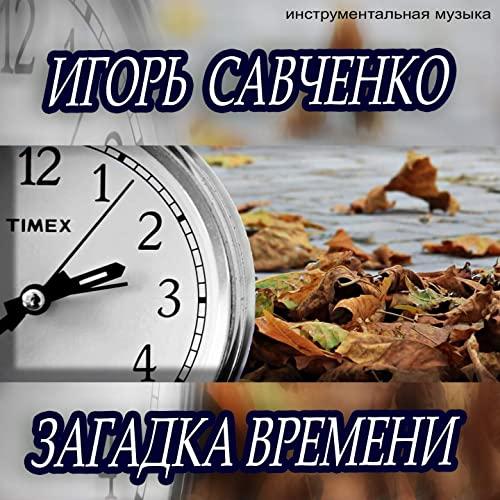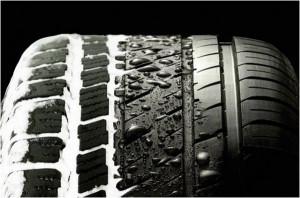
Riddle of time
Content
Time has always been a problem. First, it was difficult for even the most brilliant minds to understand what time really was. Today, when it seems to us that we understand this to some extent, many believe that without it, at least in the traditional sense, it will be more comfortable.
"" Written by Isaac Newton. He believed that time could only be truly understood mathematically. For him, one-dimensional absolute time and the three-dimensional geometry of the Universe were independent and separate aspects of objective reality, and at each moment of absolute time all events in the Universe occurred simultaneously.
With his special theory of relativity, Einstein removed the concept of simultaneous time. According to his idea, simultaneity is not an absolute relationship between events: what is simultaneously in one frame of reference will not necessarily be simultaneously in another.
An example of Einstein's understanding of time is the muon from cosmic rays. It is an unstable subatomic particle with an average lifetime of 2,2 microseconds. It forms in the upper atmosphere, and although we expect it to travel only 660 meters (at the speed of light 300 km/s) before disintegrating, time dilation effects allow cosmic muons to travel over 000 kilometers to the Earth's surface. and further. . In a reference frame with the Earth, muons live longer due to their high speed.
In 1907, Einstein's former teacher Hermann Minkowski introduced space and time as. Spacetime behaves like a scene in which particles move in the universe relative to each other. However, this version of spacetime was incomplete (see also: ). It did not include gravity until Einstein introduced general relativity in 1916. The fabric of space-time is continuous, smooth, warped and deformed by the presence of matter and energy (2). Gravity is the curvature of the universe, caused by massive bodies and other forms of energy, that determines the path that objects take. This curvature is dynamic, moving as objects move. As physicist John Wheeler says, "Spacetime takes over mass by telling it how to move, and mass takes over spacetime by telling it how to curve."
2. Einstein's space-time
Time and the quantum world
The general theory of relativity considers the passage of time to be continuous and relative, and considers the passage of time to be universal and absolute in the selected slice. In the 60s, a successful attempt to combine previously incompatible ideas, quantum mechanics and general relativity led to what is known as the Wheeler-DeWitt equation, a step towards a theory quantum gravity. This equation solved one problem but created another. Time plays no part in this equation. This has led to a great controversy among physicists, which they call the problem of time.
Carlo Rovelli (3), a modern Italian theoretical physicist has a definite opinion on this matter. “, he wrote in the book “The Secret of Time”.
3. Carlo Rovelli and his book
Those who agree with the Copenhagen interpretation of quantum mechanics believe that quantum processes obey the Schrödinger equation, which is symmetrical in time and arises from the wave collapse of a function. In the quantum mechanical version of entropy, when entropy changes, it is not heat that flows, but information. Some quantum physicists claim to have found the origin of the arrow of time. They say that energy dissipates and objects align because elementary particles bind when they interact in a form of "quantum entanglement." Einstein, along with his colleagues Podolsky and Rosen, considered such behavior to be impossible because it contradicted the local realist view of causation. How can particles located far from each other interact with each other at once, they asked.
In 1964, he developed an experimental test that disproved Einstein's claims about so-called hidden variables. Hence, it is widely believed that information does travel between entangled particles, potentially faster than light can travel. As far as we know, time does not exist for entangled particles (4)
A group of physicists at the Hebrew University led by Eli Megidish in Jerusalem reported in 2013 that they had succeeded in entangling photons that did not coexist in time. First, in the first step, they created an entangled pair of photons, 1-2. Shortly thereafter, they measured the polarization of photon 1 (a property that describes the direction in which light oscillates) - thereby "killing" it (stage II). Photon 2 was sent on a journey, and a new entangled pair 3-4 was formed (step III). Photon 3 was then measured along with traveling photon 2 in such a way that the entanglement coefficient "changed" from the old pairs (1-2 and 3-4) to the new combined 2-3 (step IV). Some time later (stage V) the polarity of the only surviving photon 4 is measured and the results are compared with the polarization of the long-dead photon 1 (back in stage II). Result? The data revealed the presence of quantum correlations between photons 1 and 4, "temporally non-local". This means that entanglement can occur in two quantum systems that have never coexisted in time.
Megiddish and his colleagues can't help but speculate about possible interpretations of their results. Perhaps the measurement of the polarization of photon 1 in step II somehow directs the future polarization of 4, or the measurement of the polarization of photon 4 in step V somehow rewrites the previous polarization state of photon 1. Both forward and backward, quantum correlations propagate to the causal void between the death of one photon and the birth of another.
What does this mean on a macro scale? Scientists, discussing the possible implications, talk about the possibility that our observations of starlight somehow dictated the polarization of photons 9 billion years ago.
A pair of American and Canadian physicists, Matthew S. Leifer of Chapman University in California and Matthew F. Pusey of the Perimeter Institute for Theoretical Physics in Ontario, noticed a few years ago that if we don't stick to the fact that Einstein. Measurements made on a particle can be reflected in the past and future, which becomes irrelevant in this situation. After reformulating some basic assumptions, the scientists developed a model based on Bell's theorem, in which space is transformed into time. Their calculations show why, assuming that time is always ahead, we stumble over contradictions.
According to Carl Rovelli, our human perception of time is inextricably linked to how thermal energy behaves. Why do we only know the past and not the future? The key, according to the scientist, unidirectional flow of heat from warmer objects to colder ones. An ice cube thrown into a hot cup of coffee cools the coffee. But the process is irreversible. Man, as a kind of "thermodynamic machine", follows this arrow of time and is unable to understand another direction. “But if I observe a microscopic state,” writes Rovelli, “the difference between past and future disappears… in the elementary grammar of things there is no distinction between cause and effect.”
Time measured in quantum fractions
Or maybe time can be quantized? A recently emerging new theory suggests that the smallest conceivable interval of time cannot exceed one millionth of a billionth of a billionth of a second. The theory follows a concept that is at least the basic property of a watch. According to theorists, the consequences of this reasoning can help to create a "theory of everything".
The concept of quantum time is not new. Model of quantum gravity proposes that time be quantized and have a certain tick rate. This ticking cycle is the universal minimum unit, and no time dimension can be less than this. It would be as if there was a field at the foundation of the universe that determines the minimum speed of everything in it, giving mass to other particles. In the case of this universal clock, "instead of giving mass, it will give time," explains one physicist who proposes to quantize time, Martin Bojowald.
By simulating such a universal clock, he and his colleagues at Pennsylvania State College in the United States showed that it would make a difference in artificial atomic clocks, which use atomic vibrations to produce the most accurate results known. time measurements. According to this model, the atomic clock (5) sometimes did not synchronize with the universal clock. This would limit the accuracy of time measurement to a single atomic clock, meaning that two different atomic clocks might end up not matching the length of the elapsed period. Given that our best atomic clocks are consistent with each other and can measure ticks down to 10-19 seconds, or one tenth of a billionth of a billionth of a second, the basic unit of time cannot be more than 10-33 seconds. These are the conclusions of an article on this theory that appeared in June 2020 in the journal Physical Review Letters.
5. Lutetium-based atomic clock at the National University of Singapore.
Testing whether such a base unit of time exists is beyond our current technological capabilities, but still seems more accessible than measuring Planck time, which is 5,4 × 10–44 seconds.
The butterfly effect doesn't work!
Removing time from the quantum world or quantizing it can have interesting consequences, but let's be honest, the popular imagination is driven by something else, namely time travel.
About a year ago, University of Connecticut physics professor Ronald Mallett told CNN that he had written a scientific equation that could be used as the basis for real time machine. He even built a device to illustrate a key element of the theory. He believes that it is theoretically possible turning time into a loopwhich would allow time travel to the past. He even built a prototype showing how lasers can help achieve this goal. It should be noted that Mallett's colleagues are not convinced that his time machine will ever materialize. Even Mallett admits that his idea is entirely theoretical at this point.
In late 2019, New Scientist reported that physicists Barak Shoshani and Jacob Hauser of the Perimeter Institute in Canada described a solution in which a person could theoretically travel from one timeline to the second, passing through a hole in space-time or a tunnel, as they say, "mathematically possible". This model assumes there are different parallel universes in which we can travel, and has a serious drawback - time travel does not affect the travelers' own timeline. In this way, you can influence other continuums, but the one from which we started the journey remains unchanged.
And since we are in space-time continua, then with the help of quantum computer To simulate time travel, scientists recently proved that there is no "butterfly effect" in the quantum realm, as seen in many science fiction films and books. In experiments at the quantum level, damaged, seemingly almost unchanged, as if reality heals itself. A paper on the subject appeared this summer in Psysical Review Letters. “On a quantum computer, there are no problems either with simulating the opposite evolution in time, or with simulating the process of moving the process back into the past,” explained Mikolay Sinitsyn, a theoretical physicist at the Los Alamos National Laboratory and co-author of the study. Work. “We can really see what happens to the complex quantum world if we go back in time, add some damage and go back. We find that our primordial world has survived, which means that there is no butterfly effect in quantum mechanics.”
This is a big blow for us, but also good news for us. The space-time continuum maintains integrity, not allowing small changes to destroy it. Why? This is an interesting question, but a slightly different topic than time itself.
